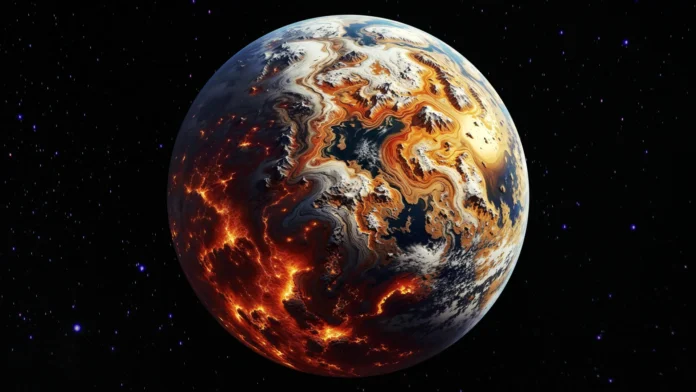Unearthing the Secrets of Proto Earth: MIT Researchers Discover Rare Traces of Our Planet’s Ancient Precursor
Discovery of Proto Earth Traces Offers New Insights into Planetary Formation
Date: October 14, 2023
Source: Nature Geosciences
Collaborating Institutions: MIT, Chengdu University of Technology, Carnegie Institution for Science, ETH Zürich, Scripps Institution of Oceanography
In a groundbreaking study published in Nature Geosciences, researchers from the Massachusetts Institute of Technology (MIT) and several collaborating institutions have identified exceptionally rare traces of "proto Earth," the ancient precursor to our planet that existed approximately 4.5 billion years ago. This discovery sheds light on the early materials that contributed to the formation of Earth and potentially other bodies in the solar system.
The Formation of Proto Earth
Billions of years ago, the solar system was a vast, rotating cloud of gas and dust. Over time, this material coalesced into solid objects, forming the first meteorites. These meteorites gradually merged through repeated impacts, leading to the creation of proto Earth and its neighboring planets. During its formative years, Earth was a molten, lava-covered world. However, less than 100 million years after its formation, a catastrophic event occurred: a Mars-sized body collided with the young planet in what scientists refer to as a "giant impact." This collision melted and mixed the planet’s interior, erasing much of its original chemical identity.
For decades, scientists believed that any trace of proto Earth had been obliterated during this cosmic upheaval. However, the recent findings from the MIT team challenge this long-held assumption.
The Chemical Signature of Proto Earth
The research team, led by Nicole Nie, the Paul M. Cook Career Development Assistant Professor of Earth and Planetary Sciences at MIT, discovered an unusual chemical signature in ancient rock samples that differs from most materials found on Earth today. This signature manifests as a slight imbalance in potassium isotopes—specifically, a deficit in potassium-40, one of the three naturally occurring isotopes of potassium.
In modern Earth, potassium-39 and potassium-41 dominate, while potassium-40 exists only in trace amounts. The researchers found that the ancient samples exhibited a significantly lower percentage of potassium-40, suggesting that these rocks may preserve remnants of the proto Earth’s original material, which somehow survived the planet’s violent reshaping.
"This is maybe the first direct evidence that we’ve preserved the proto Earth materials," Nie stated. "We see a piece of the very ancient Earth, even before the giant impact. This is amazing because we would expect this very early signature to be slowly erased through Earth’s evolution."
Methodology and Findings
In 2023, Nie and her team examined numerous well-documented meteorites collected globally, which formed at various times and locations throughout the solar system. They compared the isotopic compositions of these meteorites to that of Earth and identified a peculiar "potassium isotopic anomaly." This anomaly suggested that any material exhibiting the same potassium imbalance must originate from before the giant impact that altered Earth’s chemistry.
The team analyzed rock samples from Greenland and Canada, where some of the oldest preserved rocks are found, as well as lava deposits from Hawaii. They dissolved these samples in acid, isolated the potassium, and used a mass spectrometer to measure the ratios of potassium’s three isotopes. Remarkably, they identified an isotopic signature that was distinct from most materials on Earth, confirming the presence of a potassium-40 deficit.
Implications for Understanding Earth’s Origins
The researchers conducted simulations to determine how the potassium-40 deficit would change following impacts and geological processes over time. Their findings suggest that materials with a potassium-40 deficit are likely remnants of the proto Earth. Interestingly, the signature found in the samples does not precisely match any known meteorite, indicating that the original materials that formed proto Earth have yet to be discovered.
"Scientists have been trying to understand Earth’s original chemical composition by combining the compositions of different groups of meteorites," Nie explained. "But our study shows that the current meteorite inventory is not complete, and there is much more to learn about where our planet came from."
Conclusion
This research, supported in part by NASA and MIT, opens new avenues for understanding the early history of Earth and the processes that shaped not only our planet but potentially others in the solar system. As scientists continue to explore the remnants of proto Earth, they may uncover further insights into the origins of our planet and the complex dynamics of planetary formation.
